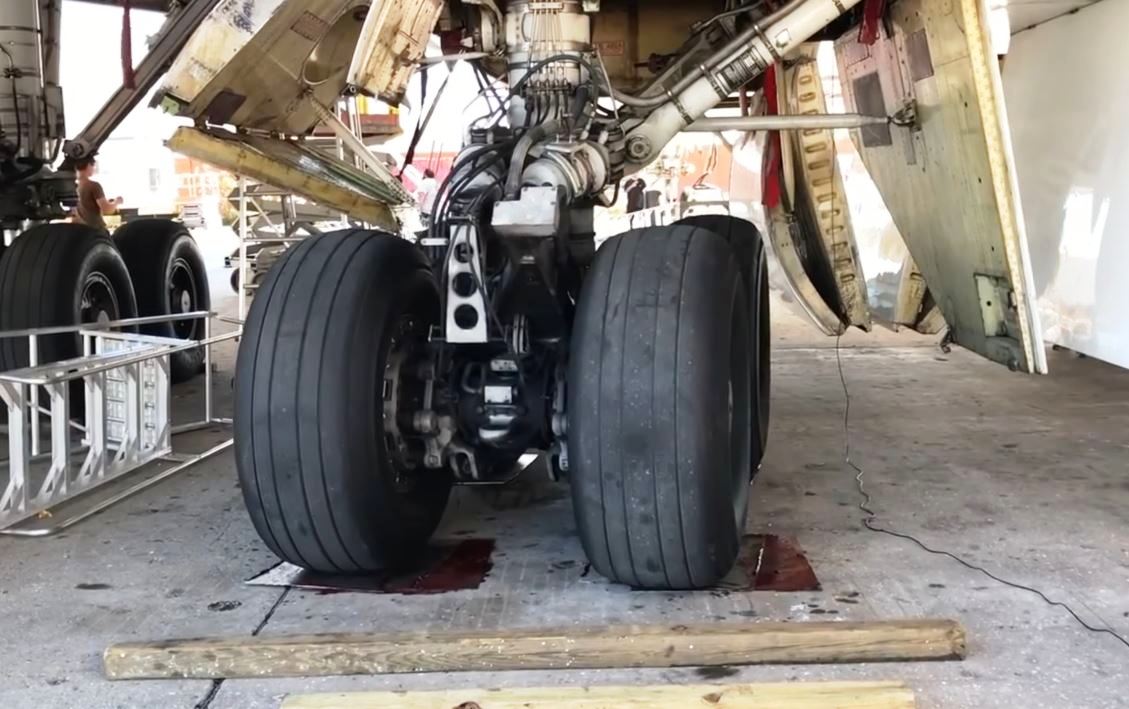by Captain Joe
A great video about the BODY GEAR STEERING of the Boeing 747.
So as we look at the 747-400 you can see that she is one very long airplane, 70,7 meters in length and 64.9 meters of wingspan, not to mention her younger and even longer sister the 747-8.
A problem the 747 is facing from time to time, at given airports, is not just the length and wingspan but her turning radius and width needed to perform a 180-degree turn.
The landing gear of the 747 consists of four main landing gear assemblies, the wing gear, which is mounted in the wing root on either side and the body gear mounted in the belly/fuselage.
If we look closely at the body gear you can see those two actuators, those are the body gear steering actuators which can rotate the entire truck by 13 degrees to either side.
Now the body gear is electrically linked to the nose wheel steering, meaning if either pilot moves the nose wheel tiller, to steer the plane along a taxiway, as soon as the nose wheel is deflected more than 20 degrees, let´s say to the left, the body gear steering comes active and each body gear truck rotates in the opposite direction, as the respective actuator, in this case, the right one, forces the forward part of the truck to the right and aft to the left.
And obviously into the other direction placing the tiller to the right. Interesting to know, the system hydraulically centres the body gear and deactivates the system if the ground speed increases beyond 20 knots, and comes active again when the speed decrease through 15 knots.
Besides that, the rudder pedals which are also connected to the nose wheel steering, won´t activate the body gear steering at any time, as you can only deflect the nose wheel by 7 degrees to either side not reaching the activation of 20 degrees like the tiller.

